The processing and application of talc
The color change of talc is mainly caused by impurities. The more impurities, the darker the color. The pure ones are white, and the impurities are slightly yellow, pink, light green, light brown and other colors. The dense block has a shell-like fracture, the relative density is 2.58-2.83, and it is rich in slippery, with a glassy luster, the cleavage surface is pearly luster, and the cleavage sheet is flexible (flexibility refers to the flaky cleavage Minerals, its thin slices can be significantly bent without breaking under the action of boundary forces, but cannot be restored to their original properties after the external force is removed).
There are few natural pure talc mines, and the common associated minerals are chlorite, serpentine, magnesite, tremolite, and dolomite.
The theoretical chemical composition of talc is 4.75% H2O, 31.68% MgO and 63.47% SiO2.
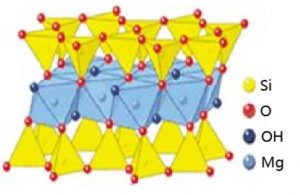
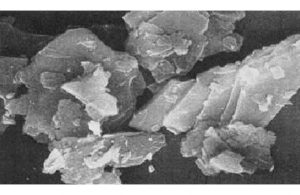
Molecular structure of talc The microstructure of talc
Physical and chemical properties of talc
- Physical properties
Adsorption: oil absorption is 49%~51%;
Thermal performance: Refractoriness is as high as 1490-1510 ℃;
Electrical insulation performance: When iron-containing minerals appear, the insulation performance is reduced;
Coverage: Ultra-fine talcum powder can form a fire-resistant and weather-resistant film;
Chemical stability: Generally speaking, it does not react with strong acids and bases;
Other properties: low hardness and strong slippery feeling; when the impurity minerals increase, the lubricating performance will decrease obviously; the talc is dense and low in hardness, and has good mechanical processing and carving performance.
- Chemical nature
The chemical composition is relatively stable. Si is sometimes replaced by Al or Ti (Al can reach 5%, Ti can reach 0.1%), Mg is often replaced by Fe and a small amount of Mn, Ni, Al (FeO reaches 5%, Fe2O3 reaches 4.2% , NiO up to 1%), sometimes containing a small amount of K, Na, Ca, these elements may be located between the talc layers or mechanically mixed, the variant of iron-rich end members-iron talc, containing FeO up to 33.7%.
Classification of talc
Talc can be divided into block talc (talc content>70%), talc rock (talc content 30-70%), talc rock can be divided into talc-chlorite rock, talc-carbonate rock.
- Talc
| Classification | Lubricity | Adsorption | Chemical stability | Fire resistance | Melting point |
| Performance | Good | Good | Good | Good | 1200°C |
| When the talc content>98%, it has good insulation performance | |||||
- Talc rock
According to its mineral type, it can be divided into chlorite rock and carbonate rock.
Chlorite rock contains chlorite, sometimes serpentine and pyroxene, with darker color and greater hardness than talc. The carbonate symbiotic minerals include magnesite, dolomite, calcite, etc., which are generally lighter in color and much harder than talc.
Talc processing technology
- Beneficiation and purification
Beneficiation and purification include flotation (talc has good natural floatability), manual sorting (talc and gangue minerals have different slippery properties), electrostatic beneficiation (talc is negatively charged and has different electrical properties from impurity minerals), magnetic separation (using magnetic Selecting and removing iron-containing minerals), photoelectric sorting (the surface optical properties of talc and impurity minerals are different), crushing and screening (the crushing methods of talc and gangue minerals are different).
- Fine grinding and superfine grinding
Talc is finally applied in powder form, therefore, fine grinding and ultra-fine grinding are one of the necessary processing techniques for talc. Talc has a Mohs hardness of 1, which is naturally crushable and has good grindability. At present, the processing of ultrafine talc powder mainly adopts a dry process. Although wet pulverization has been studied, it is rarely used in industry.
Dry grinding equipment includes impact mill, jet mill, vortex mill, vibration mill, stirring mill, and tower mill.
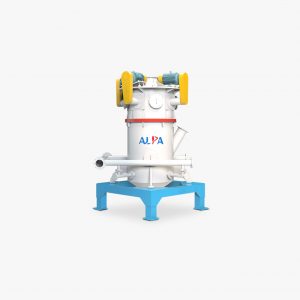
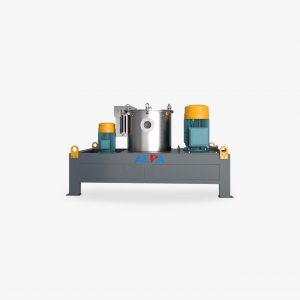
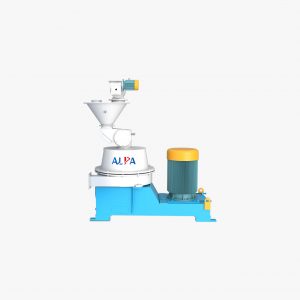
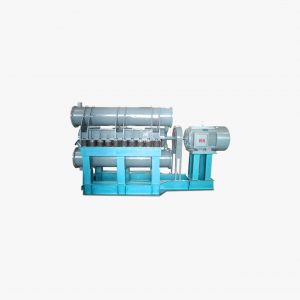
The principle of jet pulverization process of talc is: talc block→coarse crushing→drying→medium crushing→fine grinding (Raymond mill)→superfine grinding (jet mill)→cyclone aggregate→package, the product fineness can reach 500~5000 Item.
The mechanical impact superfine crushing process of talc is: talc block→crushing (hammer crusher)→mechanical impact superfine crusher→turbine type fine classifier→cyclone aggregate→packaging.
- Surface modification
The modification of talc mainly adopts dry modification process, and the surface modifiers used mainly include paraffin, titanate, zirconium aluminate coupling agent, silane coupling agent, phosphate ester, and various surface modifiers.
- Calcined
The calcining is mainly for black talc, and the calcining temperature is generally 600~1200℃. In this temperature range, the higher the temperature, the higher the whiteness of talc after calcination, and the maximum whiteness of calcination can reach more than 90.
Resource distribution of talc
The prospective reserves of talc in the world are more than 2 billion tons, and the proven reserves are about 800 million tons, covering more than 40 countries. Countries with large proven reserves are: Finland, China, the United States, Russia, and France.
There are 250 known talc deposits in the world, of which 80 are currently being mined. Among these 80, 40 have an annual output of more than 5,000 tons, and the current world’s annual output is about 6 million tons.
Application of talc
- Papermaking
Ultrafine talc can be used together with kaolin, calcium carbonate, and titanium dioxide pigments to control the matt, ink, gloss, brightness and opacity of paper.
- Plastic, rubber, cable
| Classification | Plastic | Rubber | Cable |
| Purpose | Filler | Anti-sticking agent | Reinforcing agent/release agent |
| Effect | Improve acid and alkali resistance, heat resistance, electrical insulation and processing performance | ||
- Ceramics and refractory materials
It can be used as ingredients to effectively control the thermal expansion of the ceramic body, and as a glaze can provide a cheap source of magnesium oxide. It can be directly processed into plates and can be used as furnace lining and kiln lining.
Talc can be well dispersed in both polar and non-polar matrix, and at the same time has chemical inertness and high oil absorption.
- Textile
Used as filling and brightening agent and lubricant in textiles.
Various emollient powder, beauty powder, talcum powder, etc.
- Medicine, food
Medicine tablets, sugar coatings, prickly heat powder, Chinese medicine prescriptions, food additives, release agents, etc.
- Other
Carriers for pesticides and fertilizers, arts and crafts, release agents, waterproof ointments, etc.
